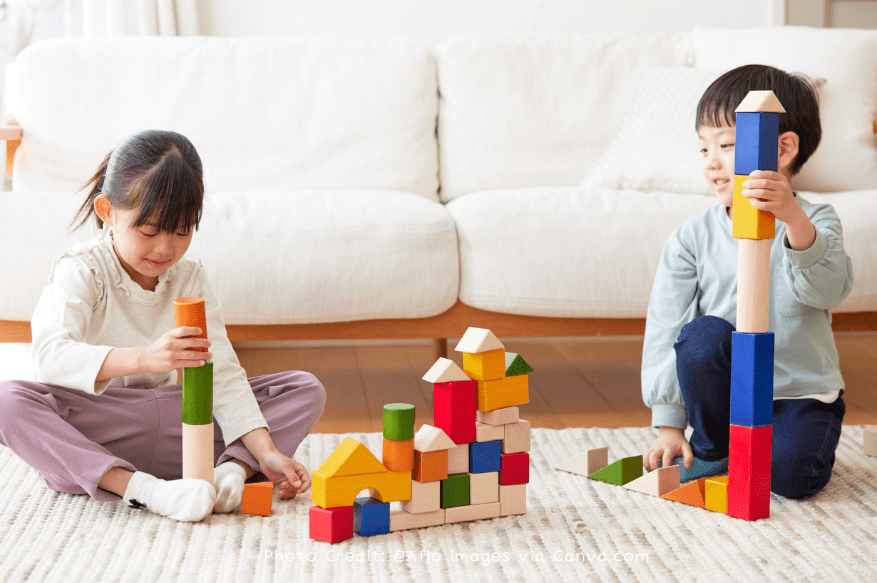From video games to bridges, the work of engineers hides in plain sight everywhere you look. As one of the components of STEM (science, technology, engineering, and math), and one that requires knowledge of all three others, engineering plays a crucial role in the infrastructure we use every day. But because the work of an engineer is often behind the scenes in the planning and design of structural elements of buildings, the functionality of websites, even getting water to our homes, it may be tougher for kids to grasp. Whether you’re a little fuzzy on the difference between an architect and an engineer or are an engineer yourself, we have tips for introducing kids to the basics of engineering with our explainer and activities below, guaranteed to get them thinking and building!

What Is an Engineer? An Explainer for Kids
Not sure where to start explaining different engineering fields to your child? You’re not alone! Here’s how we explain engineering to kids at STEMful:
Engineers are people who help keep the world running smoothly. They work with designers, architects, and scientists to help them turn their ideas into the things we use every day. Some engineers work indoors in an office, drawing up and reviewing plans so that buildings and roads can be constructed, or with computers, writing code for video games and software and testing the results.
Some engineers work outside, visiting construction sites and making sure their projects are built to their plans. Every engineer solves problems so that the environment and the people who use the products and systems they have designed are safe. Here are a few different kinds of engineers with examples of what they do:
- Civil Engineers: Every time you get in a car or take the bus, an engineer’s work helps you get to your destination. Civil engineers keep our communities moving with something called infrastructure, a big word for things we sometimes don’t notice, especially when they are running smoothly. Infra- means “below” or “under,” and a structure is something that holds or supports. So infrastructure means a support that is below or under us. The systems of pipes that bring clean drinking water into our homes and take dirty water away from them are part of our community’s infrastructure. Civil engineers plan those systems, as well as roads and public transit routes, to serve our communities.
- Structural Engineers: When you play with blocks or build something with Legos so that they don’t fall down, you’re engineering! Big buildings and small buildings all need engineers. Bridges like the Golden Gate Bridge and Bay Bridge need them too. A structural engineer will examine the place a building or bridge will go and work with architects and designers—the people who draw the plans or blueprints for how the building will look inside and out, like how many windows it will have, how tall it will be—to make sure it can be built safely. The structural engineer solves problems before they can happen. They may choose strong materials for the building’s foundation and beams (the “skeleton” of the building) or design it to shift if the ground does, like during an earthquake. For tall buildings, structural engineers use math and physics to calculate wind speeds to make sure the structure can stand up to strong gusts.
- Environmental Engineers: These engineers work closely with earth and environmental scientists to test and observe our environment to keep people and the planet safe. On the coasts, they observe and monitor soil erosion to keep communities by the ocean safe from hurricanes. They might plan systems to make and deliver energy to light and power our homes, like designing wind farms or gas pipelines.
- Mechanical Engineers: Mechanical engineers use science and math to create robots, machinery, medical devices, cars, planes, and more! They solve problems by testing systems, products, and machines to make sure they run safely and smoothly. When they uncover a problem, they work to find a solution and to improve the design. Mechanical engineers might try a new material out that’s stronger or more flexible so that it can withstand heat or friction, or add or subtract a step on an assembly line in a factory to make producing things more efficient.
- Software Engineers: Bringing technology, math, and computer science together is what software engineers do every day. When you play a video game or use an app on a computer, tablet, phone, or other device, you’re benefiting from the work of a software engineer! They design, test, and maintain software. Software engineers’ work is found in every electronic device you use, and they help businesses keep data safe and secure and systems running smoothly.

The Engineering Design Process: Bridge-Building Activity
Now that kids have a sense of what engineers do, you can try an activity using items you have around the house—check your recycling bin!—to introduce an integral part of every engineer’s job: the engineering design process. (Here’s a basic flow chart from NASA.) It’s a little like the scientific method in that it starts with a problem or question. Feel free to incorporate existing toys, like blocks or Legos, into the process. Having kids examine how objects click together (like click-together mechanisms or adhesives) can help them understand how their toys function and relate to the building process.
The full activity may be best for kids grades 3 to 5, but little ones can get in on the fun too! Stick with easier-to-use block materials and a simple goal: Ask younger kids how long they think they can make a bridge with click-together blocks, or blocks and tape, before it collapses, then watch them build and test their guess. Littler kids may need more assistance building, but they will learn how to make a guess, test it out, and try again.
What You’ll Need:
- Paper tubes from paper towels or toilet paper rolls
- Empty cereal boxes or paper canisters
- Pipe cleaners
- Plastic cups or bottles
- Bubble wrap or padded envelopes
- Popsicle sticks
- Straws
- Can of food or another light weight (1 or 2 pounds) to test the bridge (optional)
- Building blocks or Legos (optional)
- Masking tape
- Glue
- Ruler
Building a Bridge with the Engineering Design Process
- Identify the Problem. Every engineering task starts with figuring out what the problem is. What, who, or why is something needed? Help kids envision why a bridge is needed. Is it to connect two land masses over a body of water, like an island to the mainland? To help animals cross over a highway? You can add an optional requirement, like how high or long the bridge must be or that it needs to support a light weight.
- Do Research. Before finding a solution, engineers research the problem so they don’t waste time reinventing the wheel. They ask: What has been tried before? Why didn’t it work? How can it be improved? Kids can start to understand the physics of successful bridges without pouring concrete by checking out photos and plans for existing bridges. How many supports do they have? How long are they? What are they made of? Are there available materials that might serve a similar purpose?
- Name the Requirements (optional). To level up the activity, kids can add a requirement for the bridge design. It might be that the bridge needs to support a can of food or hold another specified weight by using only basic household supplies, or that the bridge must be a certain length or height.
- Brainstorm! Encourage kids to spend some time thinking about what to use for their bridge before they begin building. What are the materials available? How might they work together? Sketch out multiple ideas, or encourage playing with the materials to see how items stack or how they can be connected. This will help visually oriented kids work out potential problems beforehand. At each step, ask kids about potential problems they see. For example, if blocks are smooth and slippery, they can be held together with tape.
- Choose a Design. Now that kids have sketched out or tested out the materials, they can choose a design and get building in the next step! Ask kids to explain why they chose this design over all the others.
- Build a Prototype. Using the sketch as a guide, kids can build their design using all the materials at their disposal. As they construct their bridge, ask questions about what’s working and what isn’t.
- Test It Out. When the bridge is standing, it’s time to test and evaluate! If there’s a special requirement, like height, length, or for holding a weight, measure and test it now. (Be sure to keep toes out of the way if you’re building the bridge on a table and testing a weight!) Does the bridge meet the requirements? If it does, great! The bridge is complete and ready for a ribbon cutting! If not, why? Assure kids that this is all part of the engineering design process and that having to tweak the design is normal as they move on to the next step.
- Tweak and Rebuild. Once kids have identified the problems, maybe that the support beams were not secure enough, or that the bridge was too long or too high without enough support along the length, they can revise. Sketch out a revision, or remove the problem parts and rebuild. Repeat steps 6 through 8 until the bridge is ready, or reevaluate the requirements.
No matter what kind of budding engineer kids might be, they can all benefit from the process of ideating, building and rebuilding, and thinking critically along the way. For more hands-on engineering activities and collaborative learning opportunities, sign your child up for one of STEMful’s programs to sprout their curiosity!
